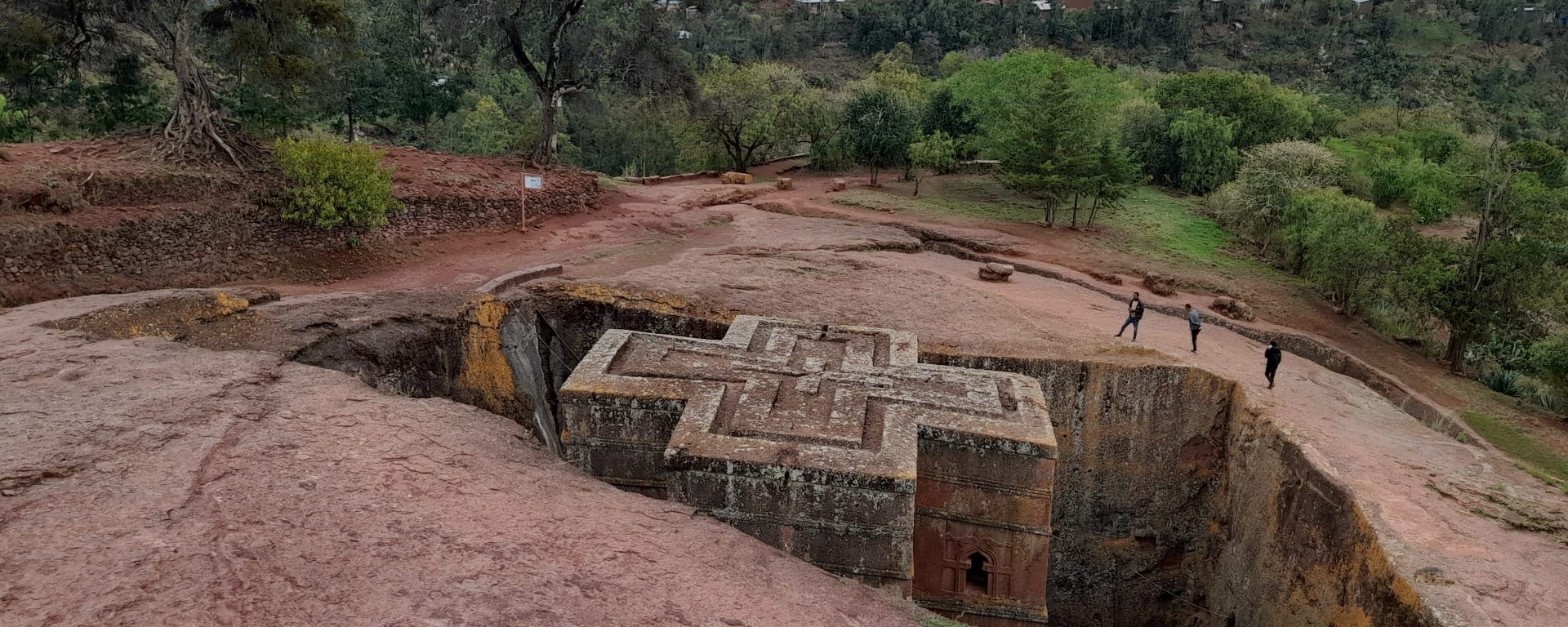It’s been years since I last wrote a blog about a trip, perhaps since Momentos que se cruzan, my first blog that no longer exists.
I decided to share a little about my trip to Lalibella,
I hope this will serve as a guide to a place that I think is worth visiting.
Spanish Version
One, two, three, and they kiss the floor
One, two, three, and kiss the walls
One, two, three, and they kiss the cross
I need to stop and contemplate: I don’t understand the language, I don’t understand some symbols.
With religious rituals, I have so much respect, they seem so intimate to me that I often don’t even dare to question why people do what they do. What is sacred to you, sacred is!
That’s why this trip to Lalibella – in northern Ethiopia – has been such a show of tenderness and deep connection.
I allowed myself to travel with the excuse of enjoying the architectural landscape offered by the monolithic churches (formed by a single large block of stone) from the 12th and 13th centuries.
These churches declared a World Heritage Site in 1978, are important for Christians as places of pilgrimage and devotion.
One day a king wanted to create his version of Jerusalem – why fiction if the reality of this world is more amazing than the imagination?- He allowed it: he had the power he used it and he gave life to a set of orthodox Christian churches, made of stone and below ground level.
I am very struck by these places, the ones that look like one thing but are something else. The ones that are not easy to pigeonhole and the ones that contemplate the most beautiful and the most terrifying stories of humanity.
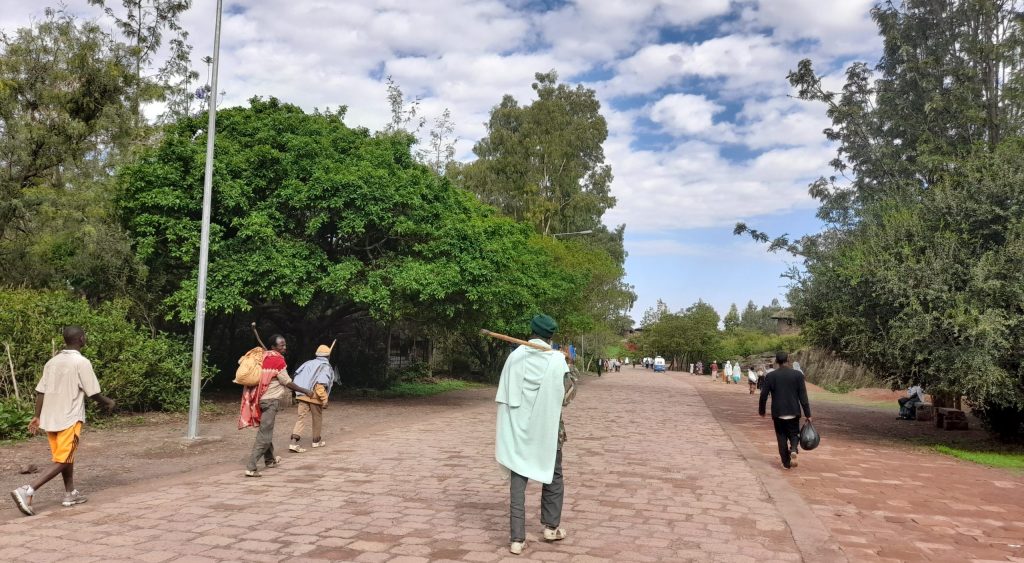
It is not possible to shed who you are while traveling, some questions began to rumble in my head at the beginning of the trip: Why do they want to have their version of Jerusalem? Why do they adore such a white version of Jesus? Why won’t they let me into certain areas of the churches when I have already paid the entrance fee? How can such a radical view of religion be preserved for so many years? I meditated and forced myself to enjoy what I saw, forced myself not to question what is sacred to them, and instead to observe and learn, if I wanted to, about the tranquility and peace of that place.
It is a small town of about 22,000 inhabitants, which between 2020 and the end of 2022 was the epicenter of one of the most recent trivial wars in the north of the country. I won’t go into details here because I am not an expert, I only know that there is still a sense of wariness in the air, destroyed buildings, hotels closed because there are no more tourists, ghost shops, and empty fridges in supermarkets and houses.
«If there is no tourism, there is no need to have stock,» a shopkeeper told me when I went to ask for milk after six failed attempts. The guide I hired for my excursion told me that he is about to leave the village for Addis or the UK, that many of his friends have done so, and that it is better than staying.
I concentrated on my experience and the churches, on the beauty and majesty of their existence.
Entrance to the complex costs 50 USD which you pay at the venue. They give you a receipt with the date of payment, which is valid for 5 days. Feel ready to show it to some guards around the churches, they will ask for it at any time.
The churches are usually open to tourists between 8 am – 12 pm and then 2 pm – 5 pm, but since they are in an unfenced village, you can see them at any time. I could not enter to one of the churches because the priest who guards it was in a meeting all day…
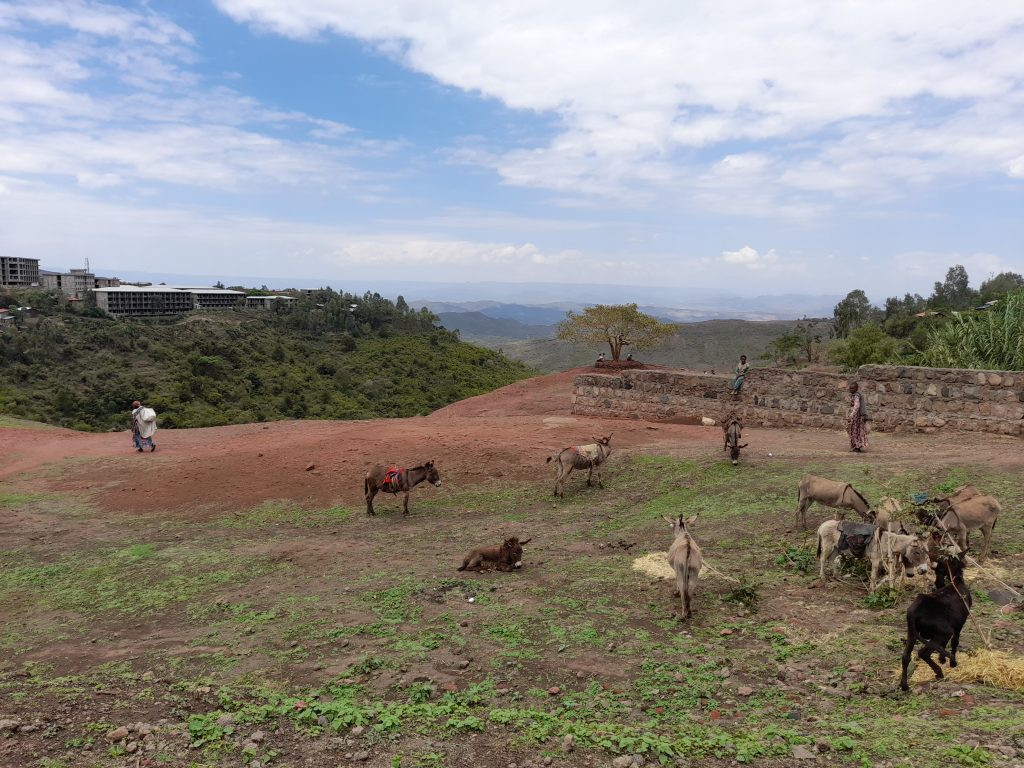
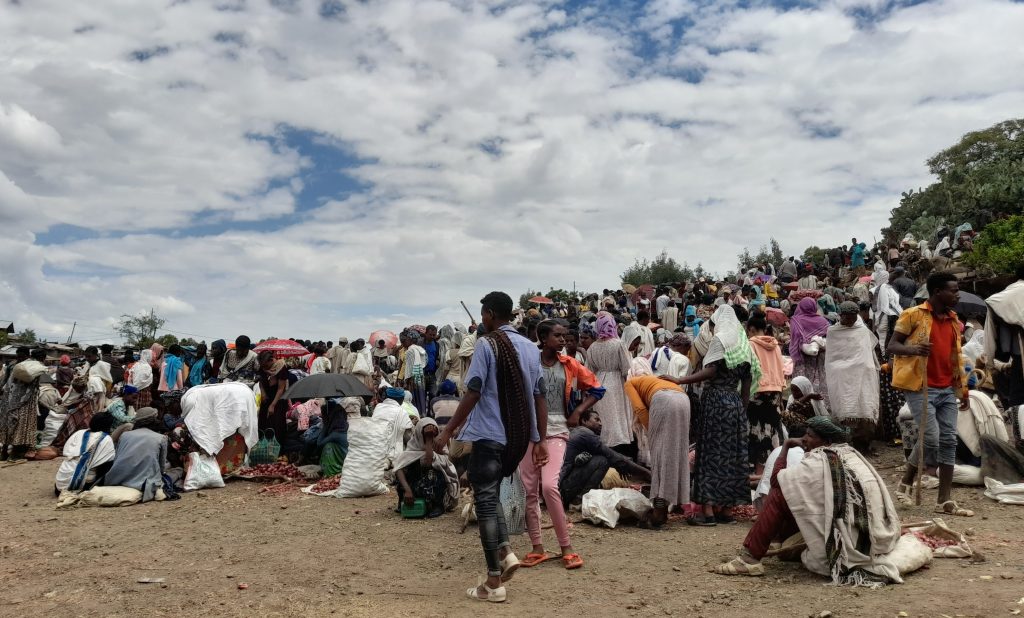
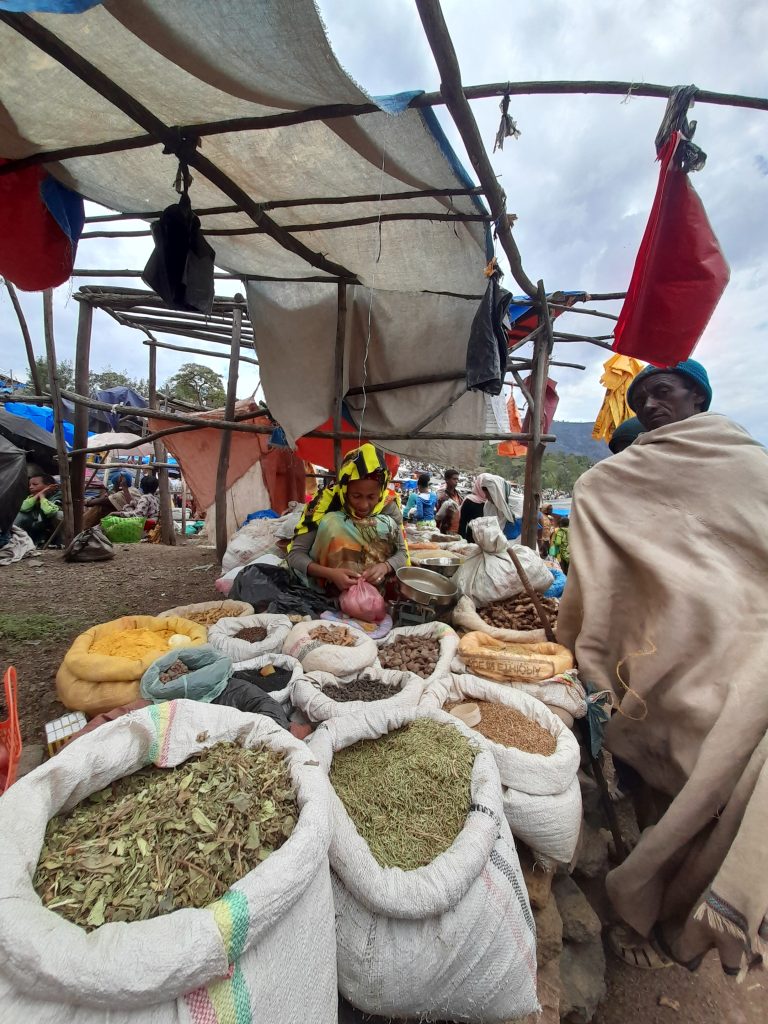
The streets of Lalibella treasure a beautiful and very unique version of humanity.
I find it fascinating to visit places that require me to look at the other with such urgency. To look at them and accept them. To look at them and give them value. To look at them and understand them. To look at them and find their full humanity.
I find it fascinating to go to places where «otherness» stands firm in front of my eyes as a young and privileged woman who has everything covered and also has the luxury of traveling the world.
Otherness in Lalibella doesn’t make itself beautiful for tourists, it doesn’t care and doesn’t need to. Churches are not tourist parks and so it is up to you to check your steps, to observe yourself before asking questions, trying to question, or making a judgment.
This is what I love about my life in East Africa: that it always exposes me to myself.
What Gebre Meskel Lalibella, that king I find so narcissistic, did was to make it clear to the rest of the world that Ethiopia, that Africa, then had the capacity to create art. (That in the 13th century was something like «look at us, rest of the world!»)
11 churches (in Amharic “Bete” means “House”)
- Church of St George / Bete Ghiorgis
- Church of the Saviour of the World / Bete Medhani Alem
- Church of Mary / Bete Mariam
- Church of the Cross / Bete Maskal
- Church of Virgins / Biete Denagel
- Church of Golgotha Mikael / Bete Golgotha Mikael
- Church of Emmanuel / Bete Amanue
- Church of St Mercoreus / Bete Qeddus Mercoreus
- Church of Abbot Libanos / Bete Abba Libanos
- Church of Gabriel Raphael / Bete Gabriel Raphael
- Church of Holy Bread / Bete Lehem
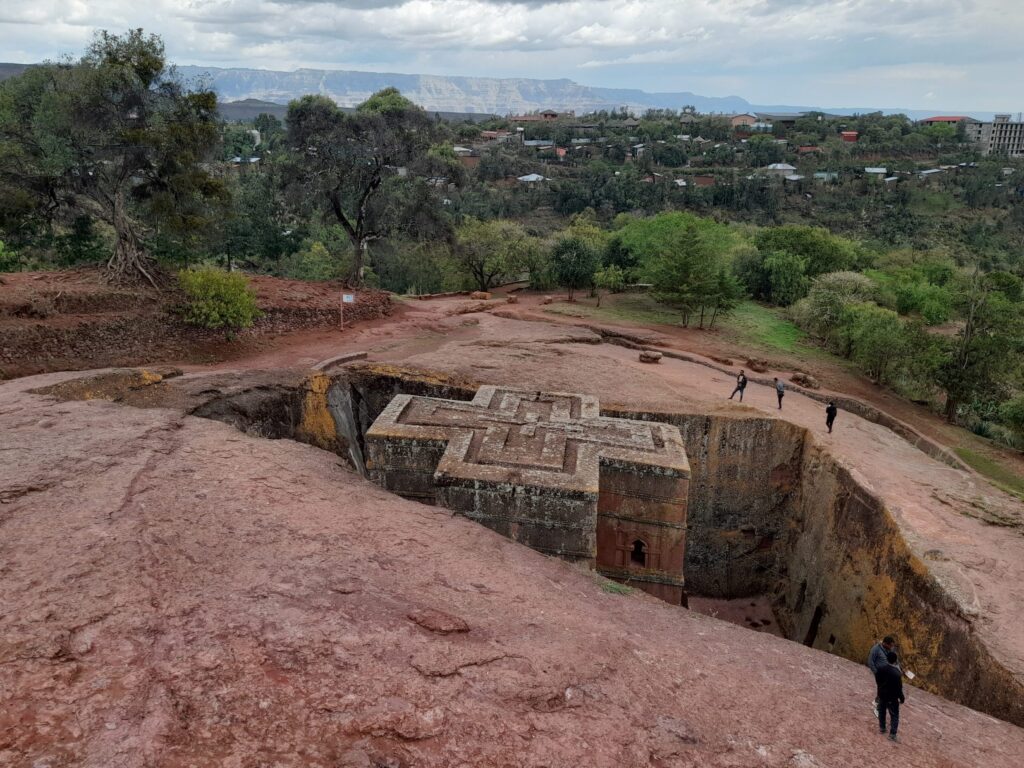
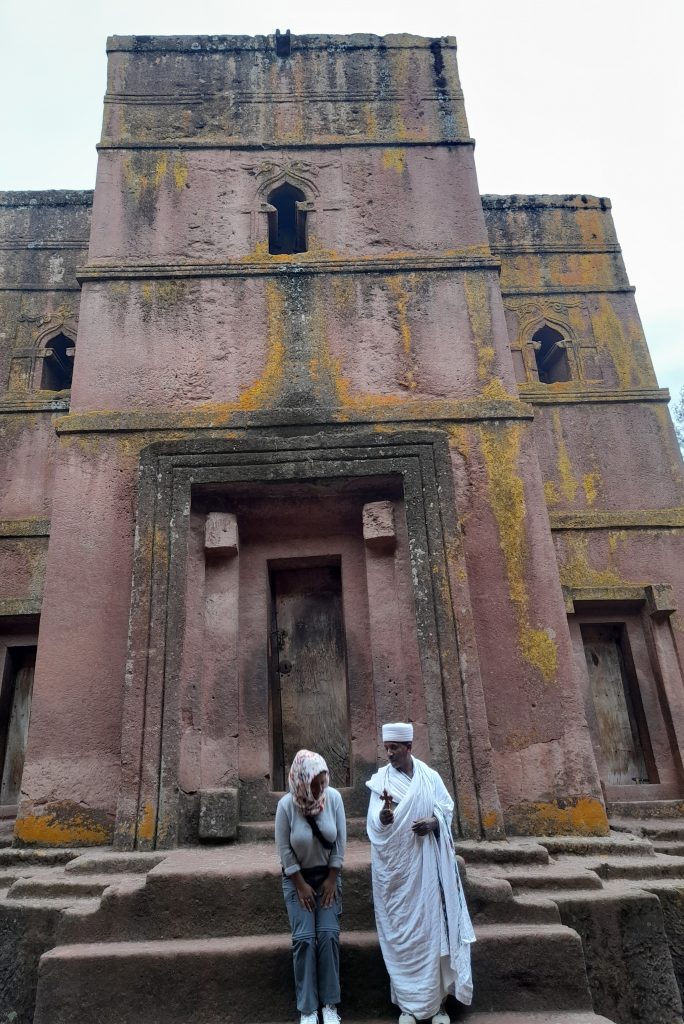
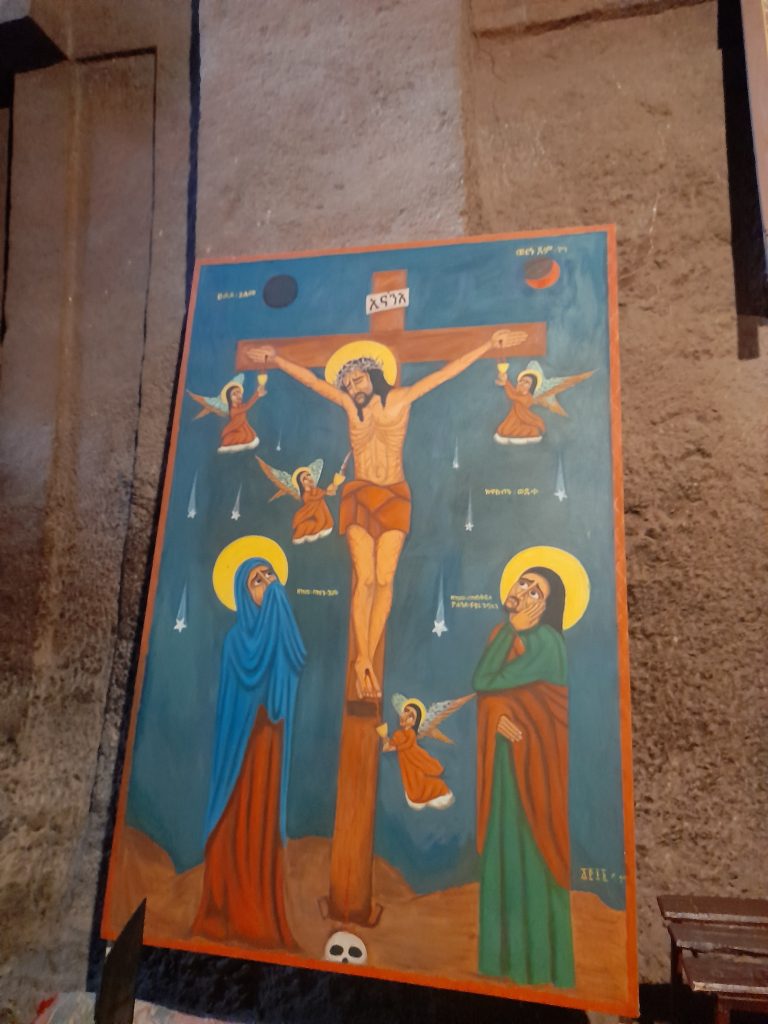
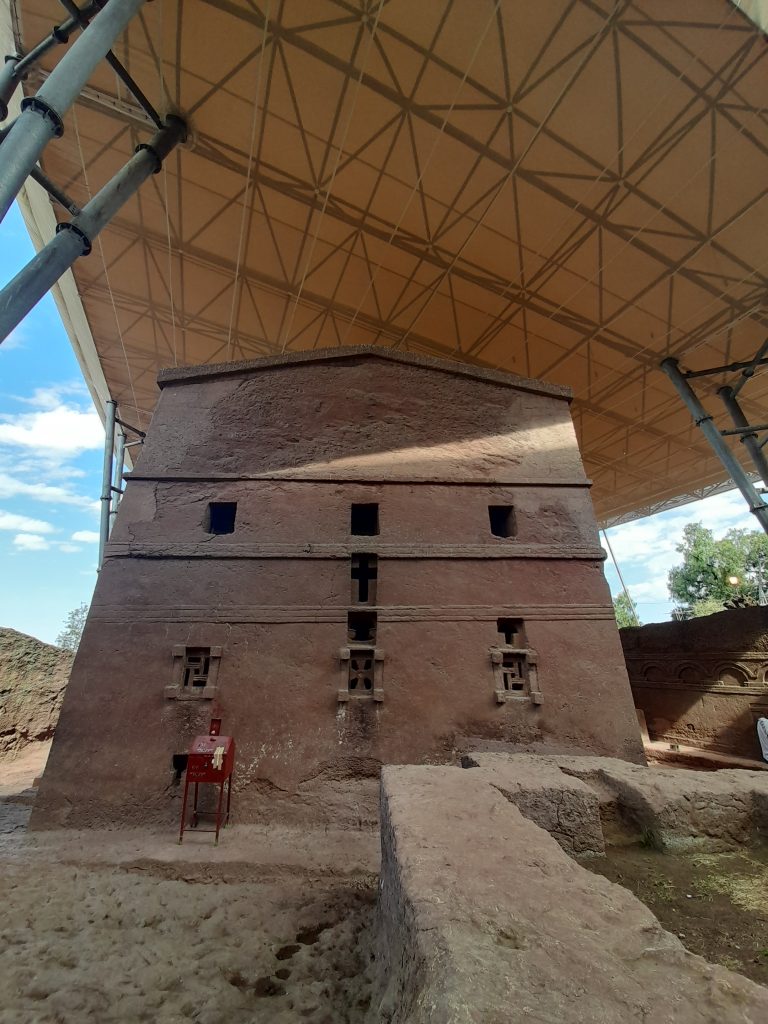
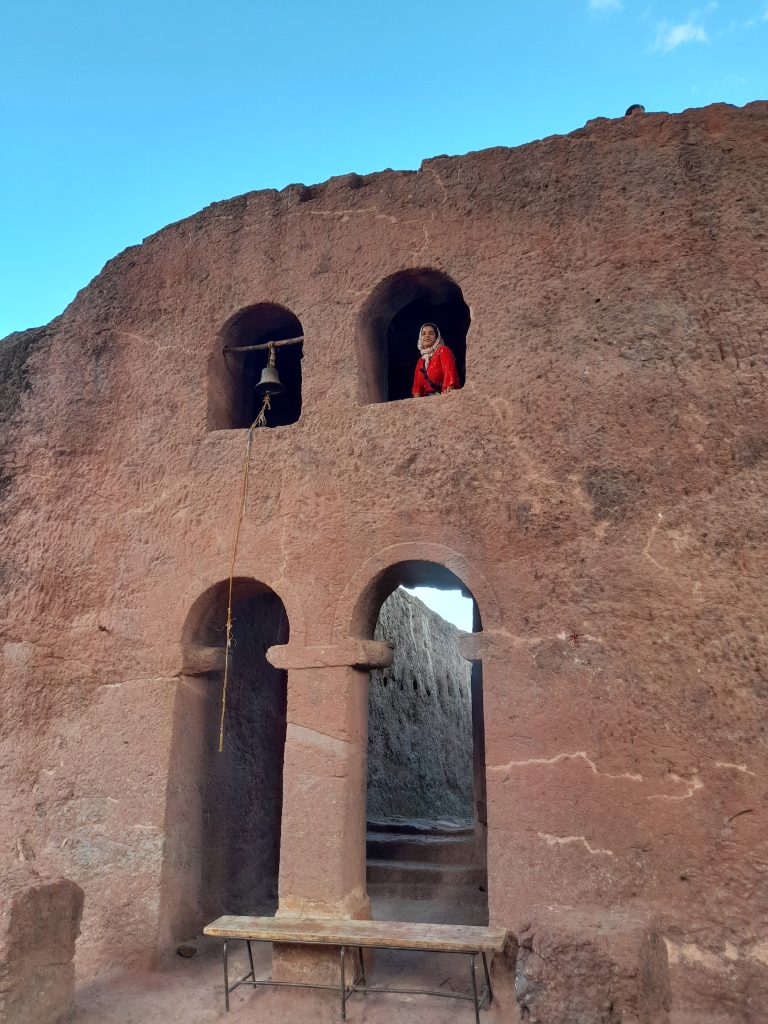
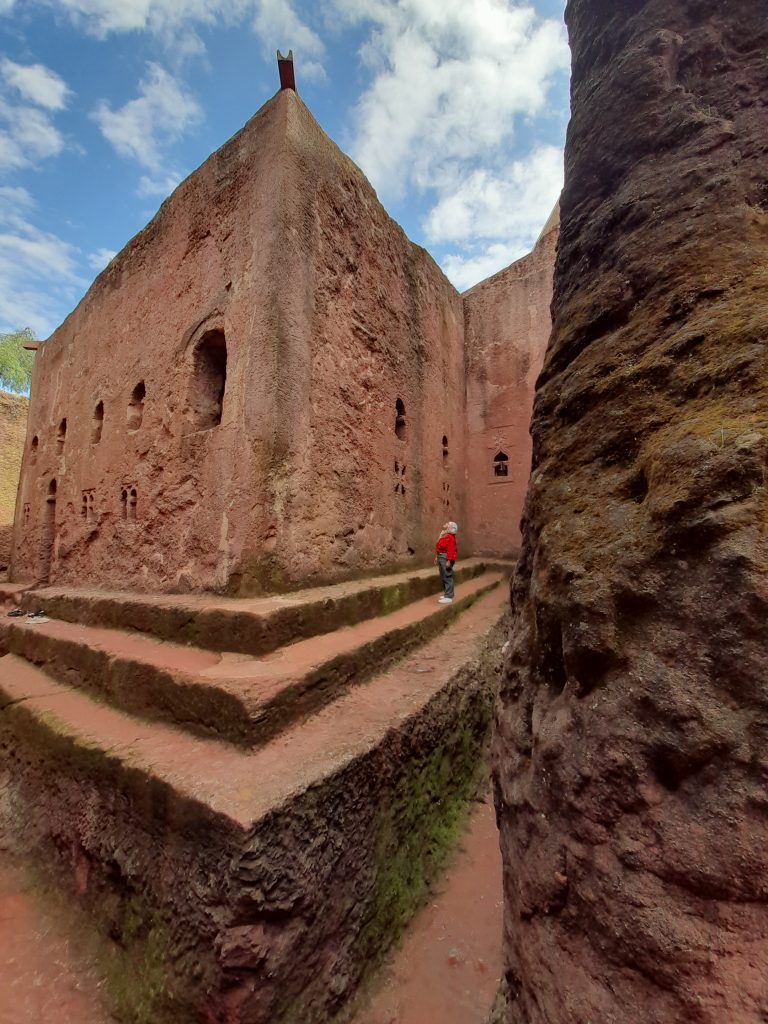
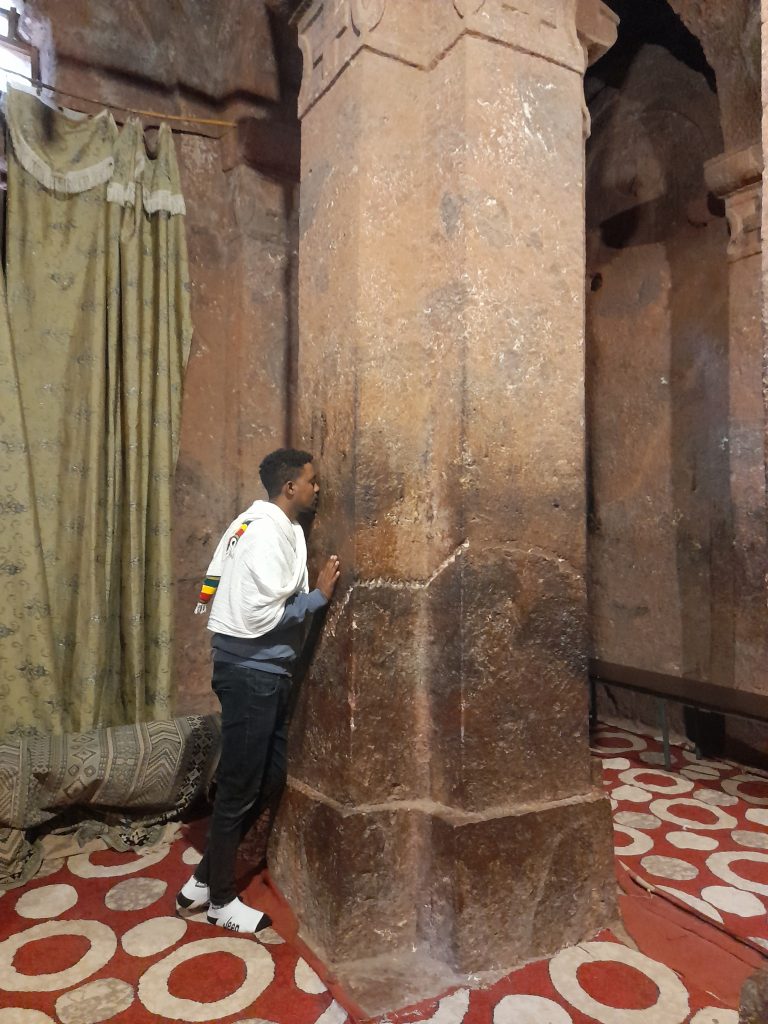
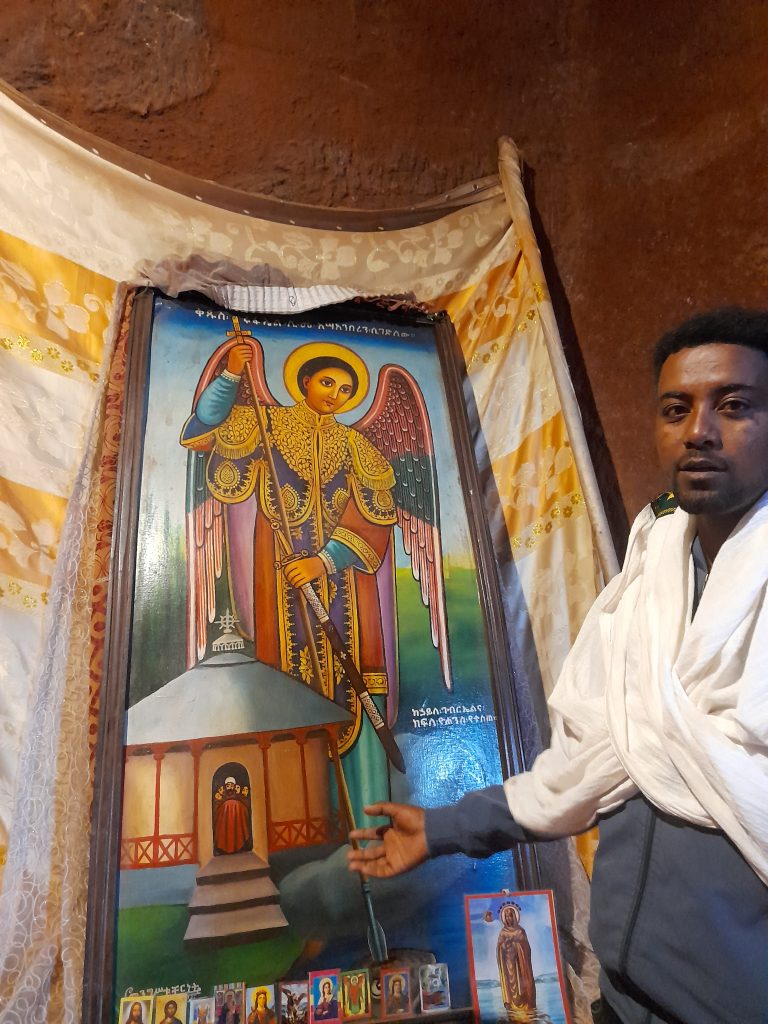
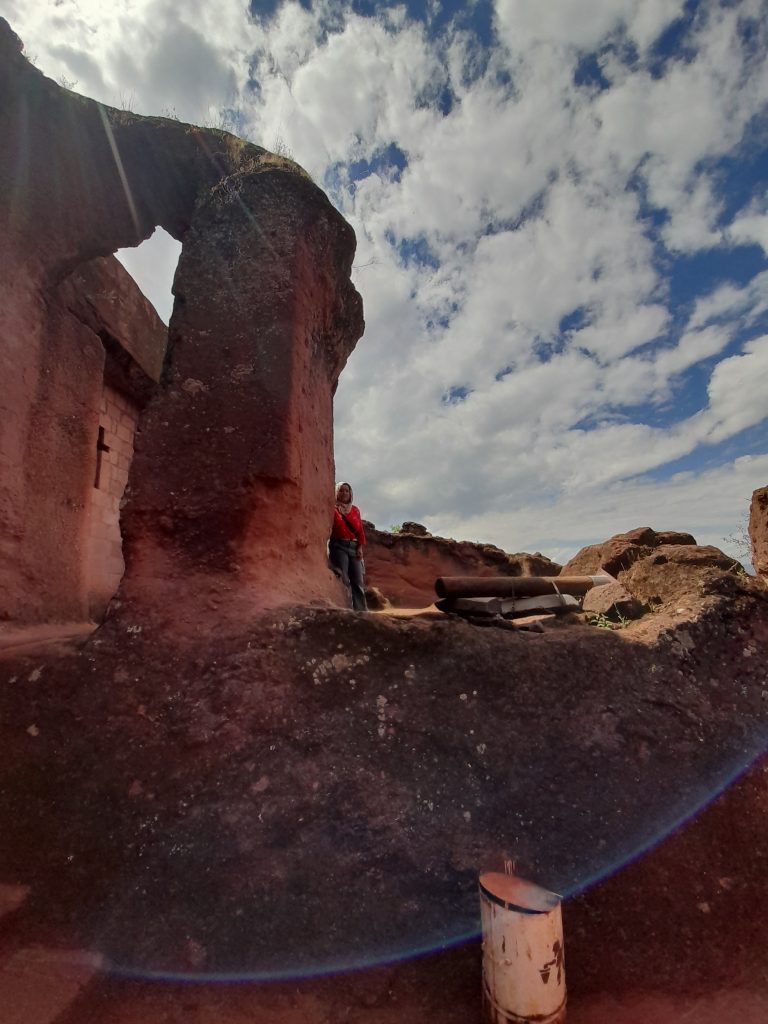
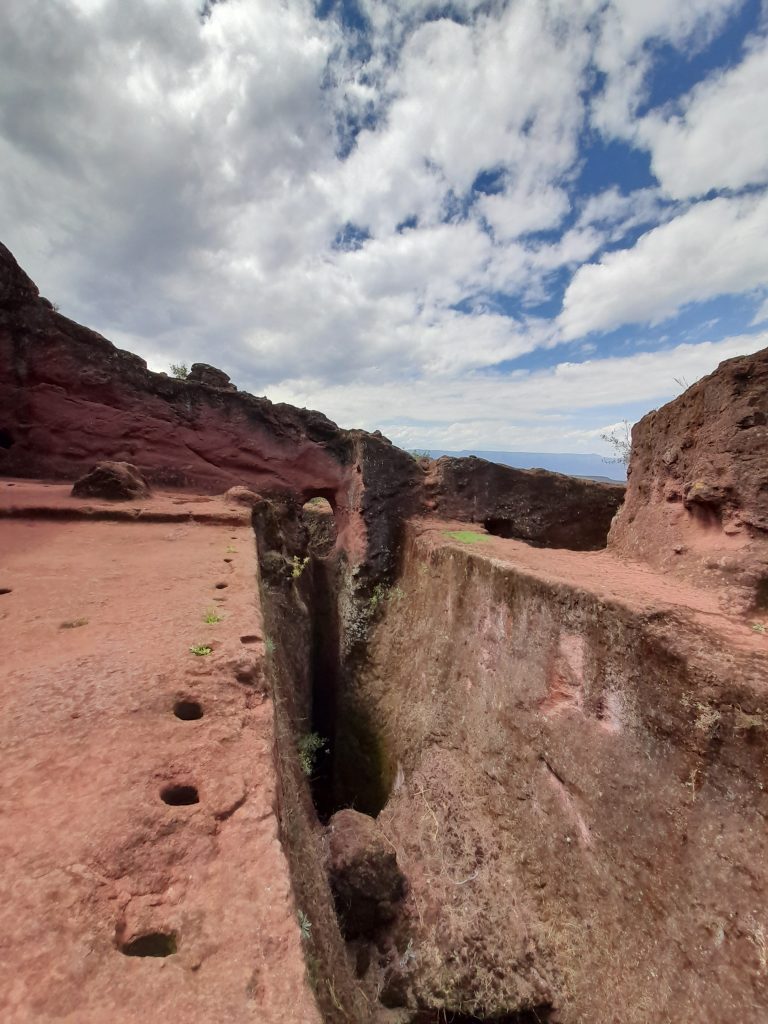
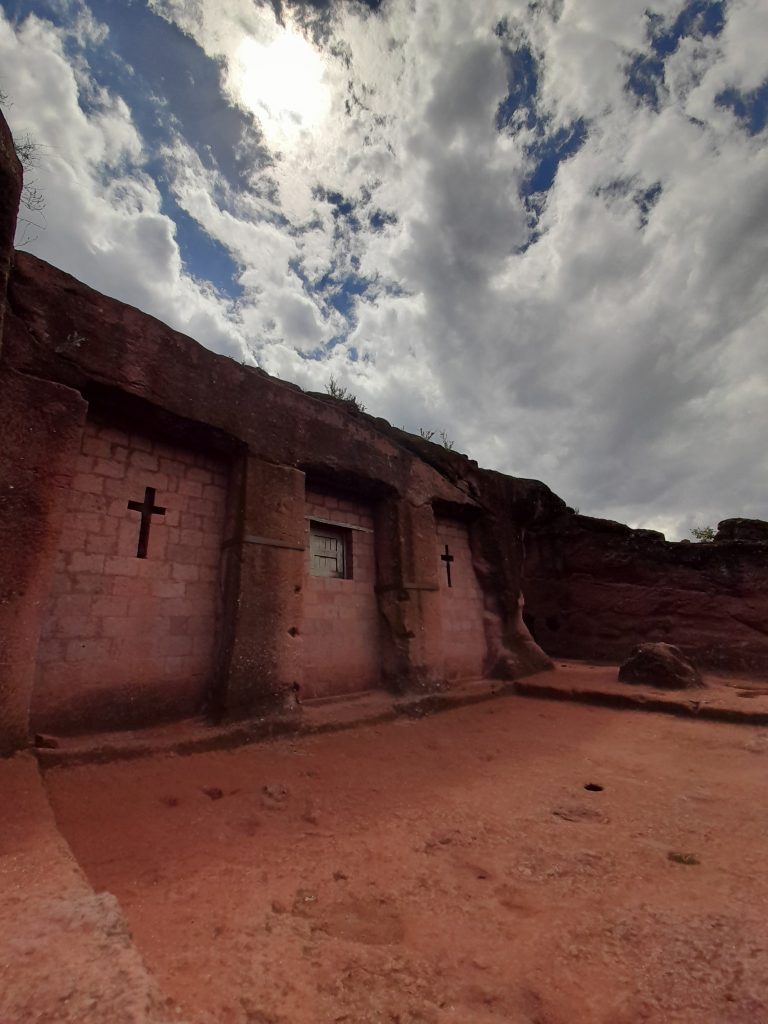
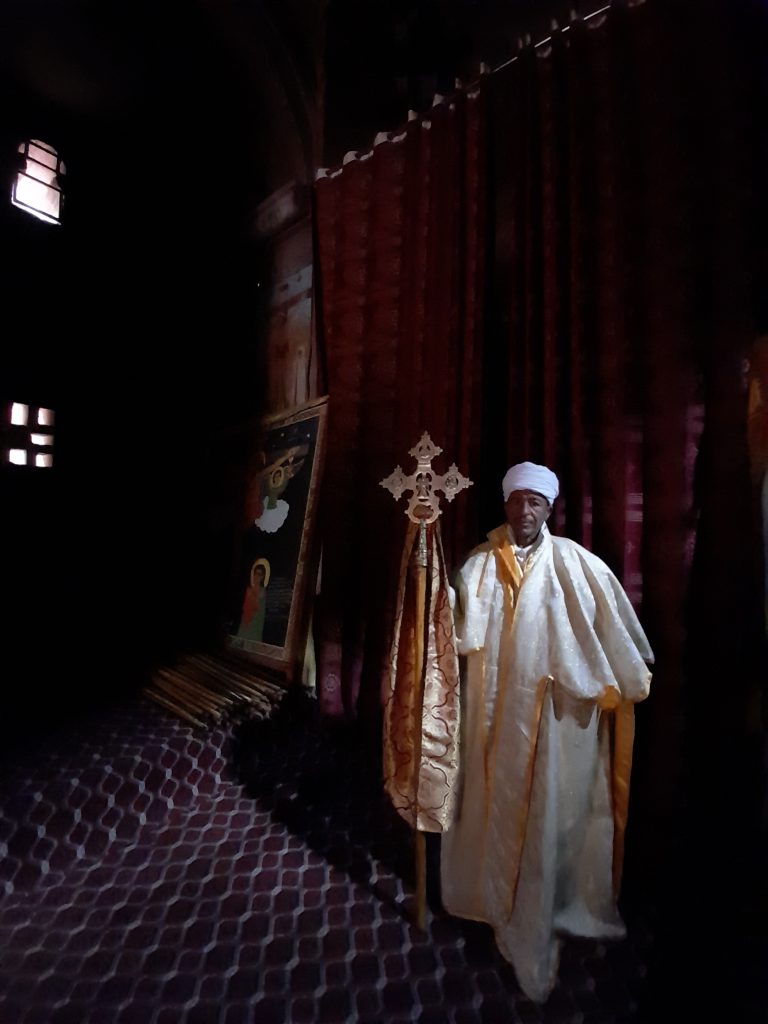
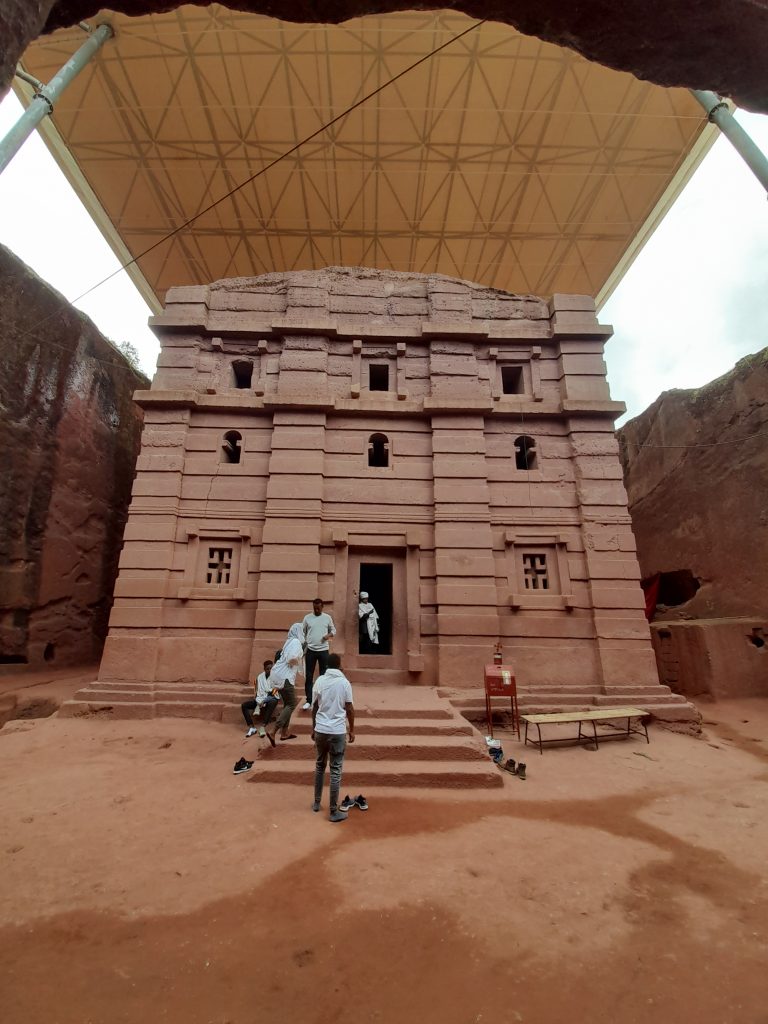
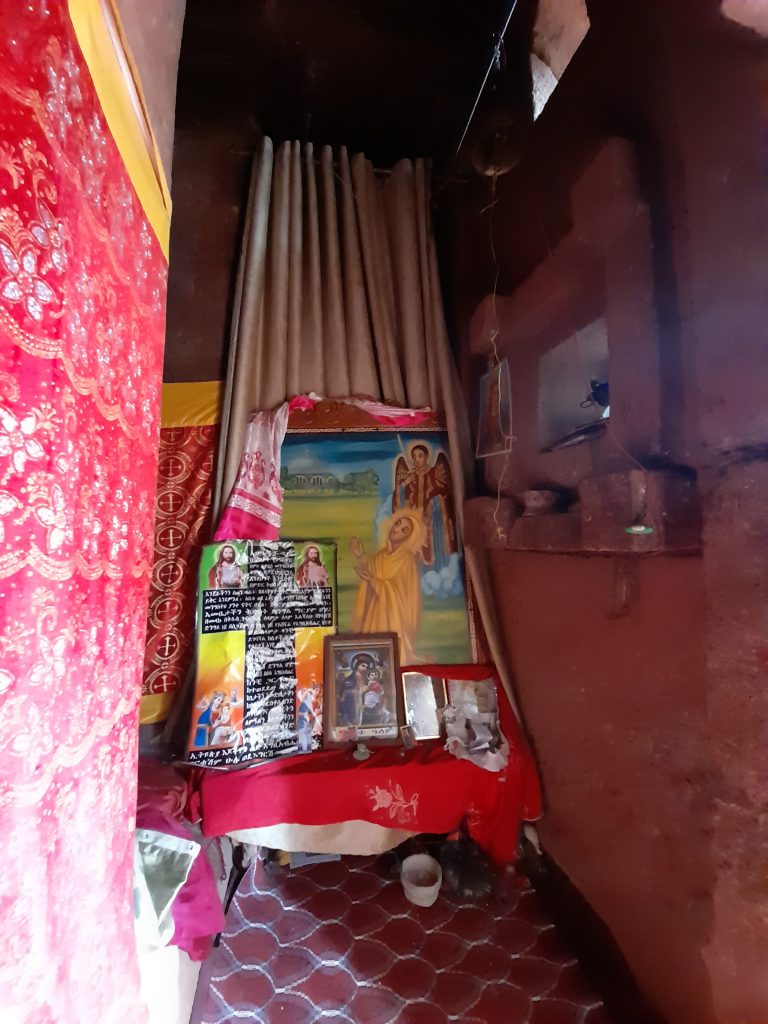
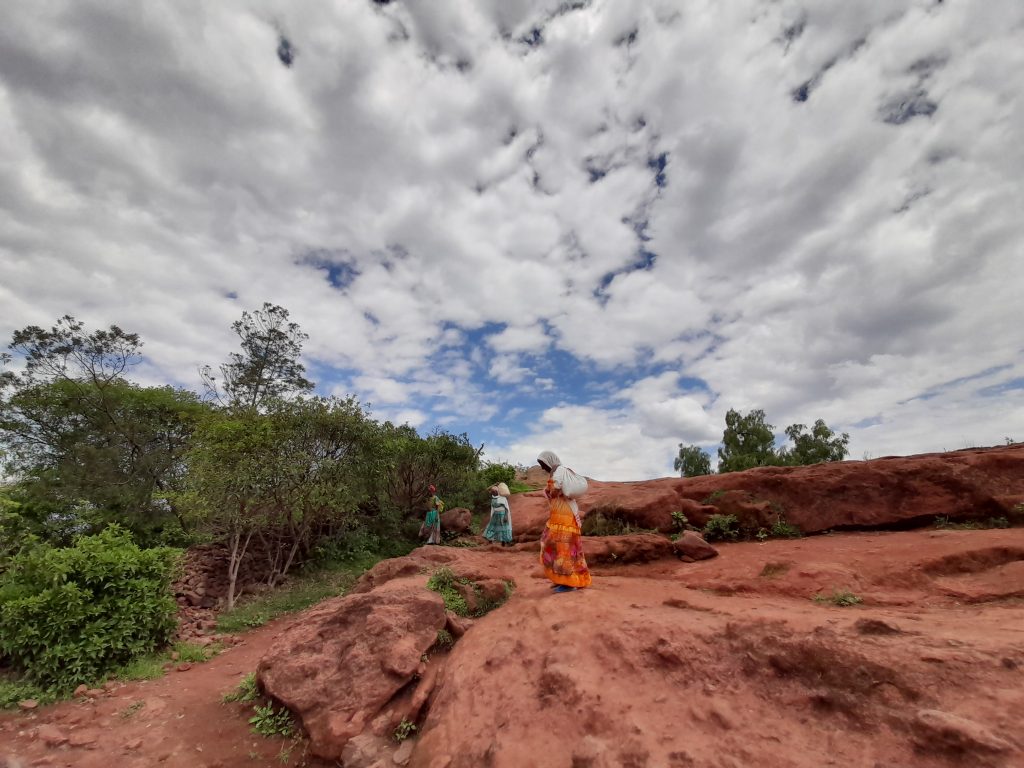
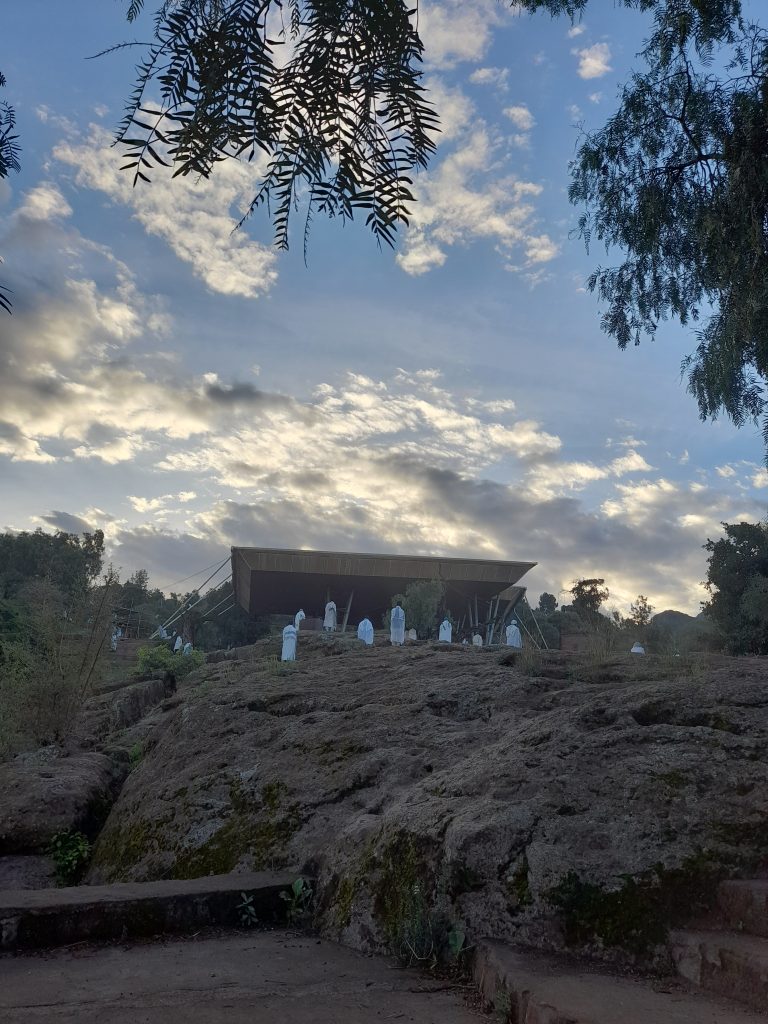
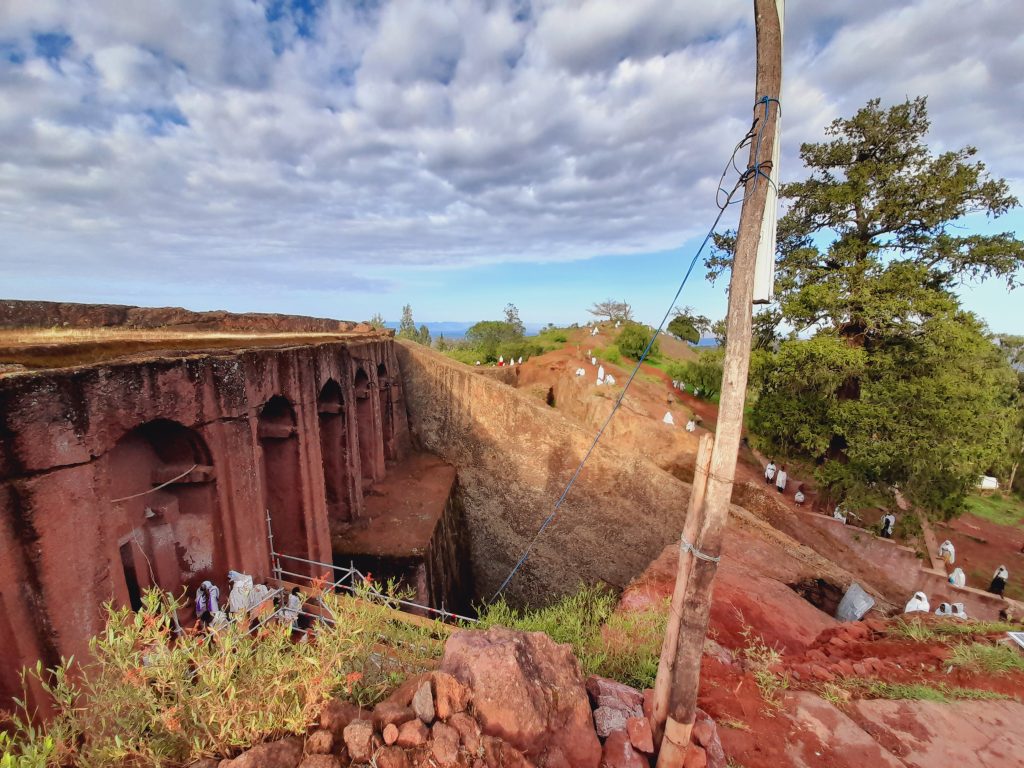
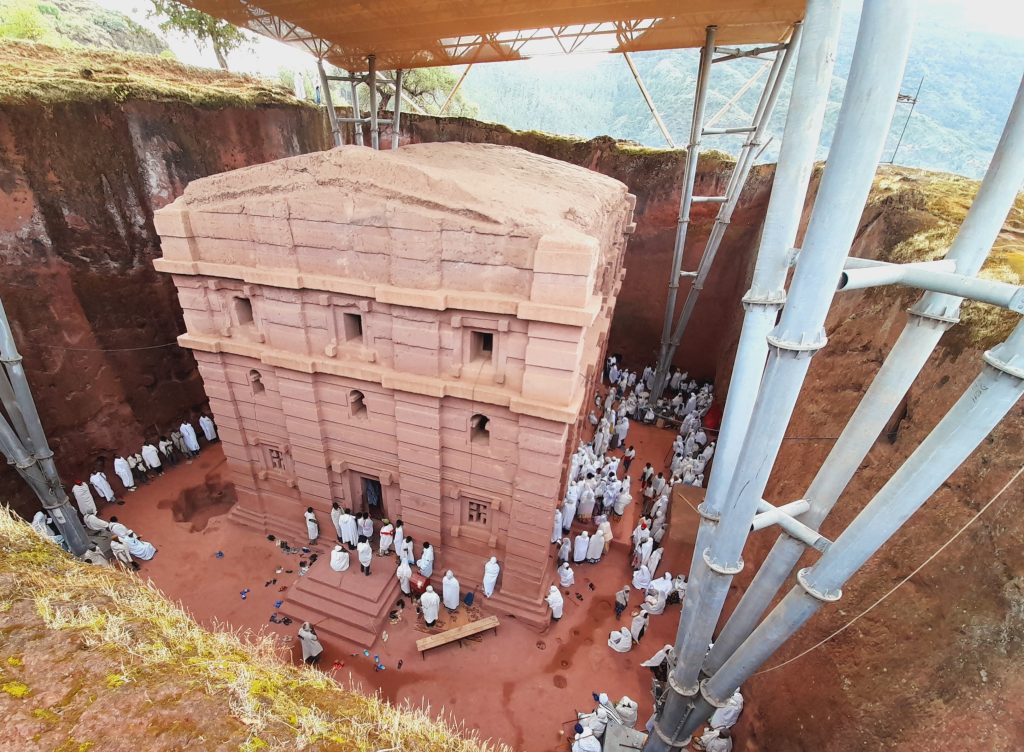
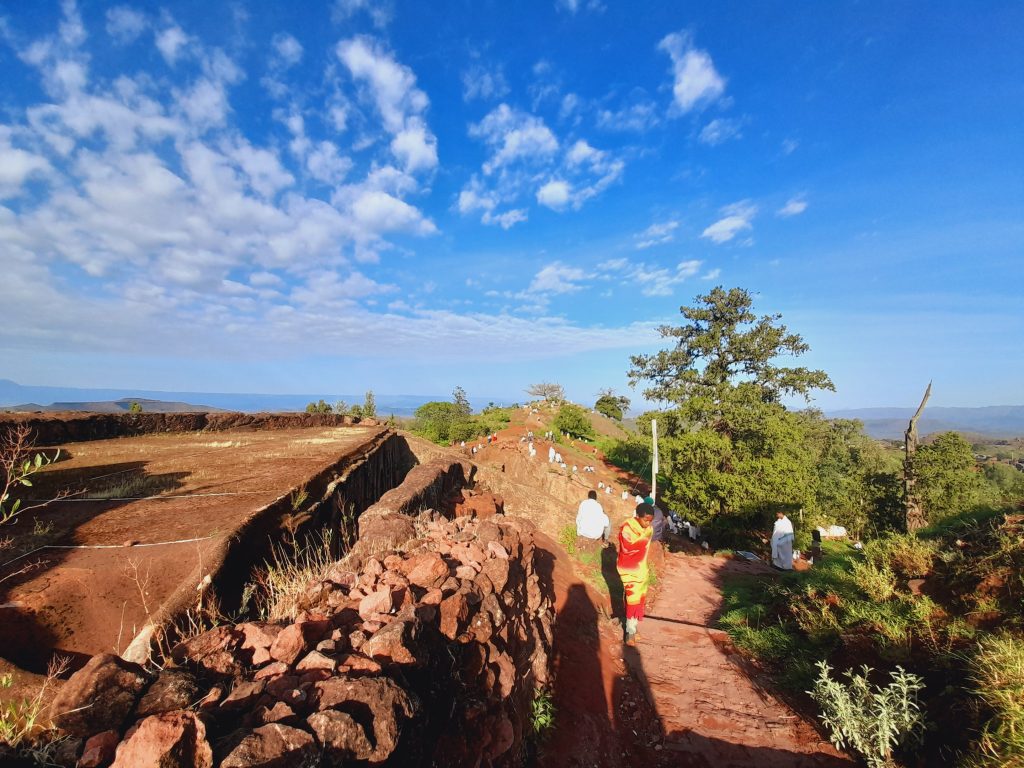
Click here to read a great blog about this experience.
Practical information:
Lalibella is a small town that can be covered in two days. Make it possible to be there on Sunday so you can be part of the solemn early morning ceremony.
Admission to the churches is 50 USD
I stayed in a very simple B&B hotel and cooked my meals. 30 USD (2 nights)
Veggies and fruits in the local market 8 USD
Guide 25 USD per day. I always prefer to travel on my own so I just called him on Saturday to visit the churches and have some historical perspective.
Tea and snacks at Ben Abeba (famous restaurant) 10 USD – transport included, I walked all the time, but this restaurant, since it has views, is a bit far from the center-
Most places asked for USD but I did not have them, I got Birr from the ATM and it worked out.
Comfortable clothes are mandatory. You have to take off your shoes at the entrance of each temple and although it is not mandatory, for women it is better to cover your head and shoulders. The locals are always very well-covered and I think the sight of a lot of skin would make them uncomfortable. Also, since the town is about 2600mts above sea level, it’s not too hot either.
Yes, there is begging and it is important to ignore it so as not to feed the poverty and lack of creativity of the people, especially kids.
I flew to and from Addis Ababa, the capital of the country. I preferred this because I didn’t have much time and the journey by public transport sounded long and uncomfortable. A tip: buy the internal flights once in Ethiopia. I saved more than 100 USD by buying the Addis – Lalibella ticket at the airport. From my destination, Uganda, it was over 250 USD. Lalibella airport is around 25km away from the town center but I am sure any hotel you contact to stay in, will do the transfers starting at 150Birr.
Words I learned:
Amesegnalew – Thanks
Gojo – Traditional house name
Kelema – Colors
Wiha Link – Balance
Tizina – Memory
Kuchit – Guilt

